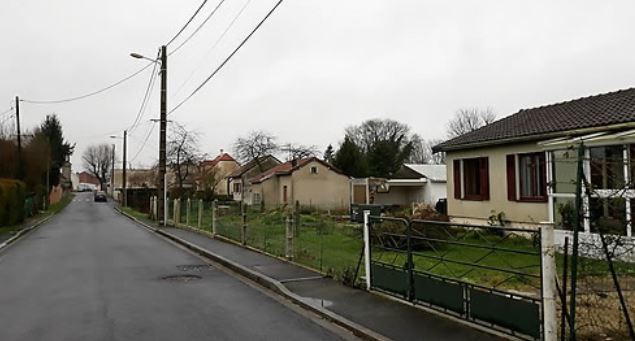Korean immigrant laborers helped reconstruct war-torn France after WWI: archive
By YonhapPublished : Feb. 28, 2018 - 14:17
PARIS -- During Japan's 1910-45 colonization of the Korean Peninsula, dozens of Korean laborers were able to emigrate to France, where they helped reconstruct the war-torn European country following World War I, according to French documents obtained by a South Korean researcher.
The findings are based on an analysis of documents containing a list of Koreans who were residing in Suippes in the Marne department in northeastern France, according to Lee Jang-kyu, who is taking a doctoral course on the Korean independence movement at the Paris 7 university.
The documents, which Lee found at the archives of the Marne department, show that the 1920 Suippes municipality foreign residents list included the names of 37 Koreans, their dates of birth, the dates of their arrival in France, the dates they applied for their residence permits and their occupations.
According to Lee, their application for residence permits as Korean nationals was a rare case, as many Koreans overseas were officially registered as Japanese or Chinese nationals during the period when Korea was colonized by Japan and thus lost its sovereignty.
The findings are based on an analysis of documents containing a list of Koreans who were residing in Suippes in the Marne department in northeastern France, according to Lee Jang-kyu, who is taking a doctoral course on the Korean independence movement at the Paris 7 university.
The documents, which Lee found at the archives of the Marne department, show that the 1920 Suippes municipality foreign residents list included the names of 37 Koreans, their dates of birth, the dates of their arrival in France, the dates they applied for their residence permits and their occupations.
According to Lee, their application for residence permits as Korean nationals was a rare case, as many Koreans overseas were officially registered as Japanese or Chinese nationals during the period when Korea was colonized by Japan and thus lost its sovereignty.

In spite of the colonization, the workers were able to keep their Korean nationality due to the activities of the French branch of the Korean provisional government in China.
After they lost their homeland following the start of Japan's colonial rule, they came to France via Russia's Far East, the North Sea and Britain, settling in Suippes near the site of the Battle of Verdun, the largest and longest battle of the First World War on the Western Front between the German and French armies.
The battle killed 700,000 people from the two countries, and laborers from Belgium, Spain and Russia, as well as Korea, took part in the large-scale reconstruction of the war-torn area.
On-site research by Lee revealed that the Korean laborers along with other foreign ones restored the railway system in Marne, buried corpses from the war and built a cemetery.
The Korean laborers resided near what is now Suippes station. "Even today, there are a few houses left where Korean people lived and local French people or history researchers still remember the Korean people's history," Lee said.
According to a research by Kim Do-hyung, a senior researcher at the Research Institute of Korean Independence Movement, the Korean people in Suippes took part in the formation of a Korean people's body, the Korean People's Council in France, in November 1919, along with Korean students and figures from the Paris branch of the Korean provisional government.
While earning a living as hard laborers, they saved money to fund the French branch and tried not to forget their identities as Koreans by learning about Korean history, geography and language.
The biggest activity carried out by them and covered by a Korean newspaper in the United States at the time was a ceremony in 1920 to which Korean people from across Europe were invited to mark the first anniversary of the 1919 civil uprising against Japan's colonial regime.
According to the newspaper, Shinhan Minbo, the ceremony brought together 35 Korean laborers, 10 Korean students, and 10 other Koreans from Britain and France.
The Korean laborers moved to Paris and other large French cities after 1924 and any documents or clues about their lives in the following years have yet to be found.
According to Lee, the archives of the Suippes municipality kept a lot of records on Korean people involved in the reconstruction of the town, but many of the records were lost in World War II.
Chang Seok-heung, a history professor at Kookmin University who taught Korean independence history at the French university, said. "The documents show the overall picture of Korean laborers for the first time in 100 years and provide important materials in the study of the first Korean emigrant group to France." (Yonhap)







![[Graphic News] More Koreans say they plan long-distance trips this year](http://res.heraldm.com/phpwas/restmb_idxmake.php?idx=644&simg=/content/image/2024/04/17/20240417050828_0.gif&u=)
![[KH Explains] Hyundai's full hybrid edge to pay off amid slow transition to pure EVs](http://res.heraldm.com/phpwas/restmb_idxmake.php?idx=644&simg=/content/image/2024/04/18/20240418050645_0.jpg&u=20240419100350)






![[From the Scene] Monks, Buddhists hail return of remains of Buddhas](http://res.heraldm.com/phpwas/restmb_idxmake.php?idx=652&simg=/content/image/2024/04/19/20240419050617_0.jpg&u=20240419175937)

![[KH Explains] Hyundai's full hybrid edge to pay off amid slow transition to pure EVs](http://res.heraldm.com/phpwas/restmb_idxmake.php?idx=652&simg=/content/image/2024/04/18/20240418050645_0.jpg&u=20240419100350)

![[Today’s K-pop] Illit drops debut single remix](http://res.heraldm.com/phpwas/restmb_idxmake.php?idx=642&simg=/content/image/2024/04/19/20240419050612_0.jpg&u=)